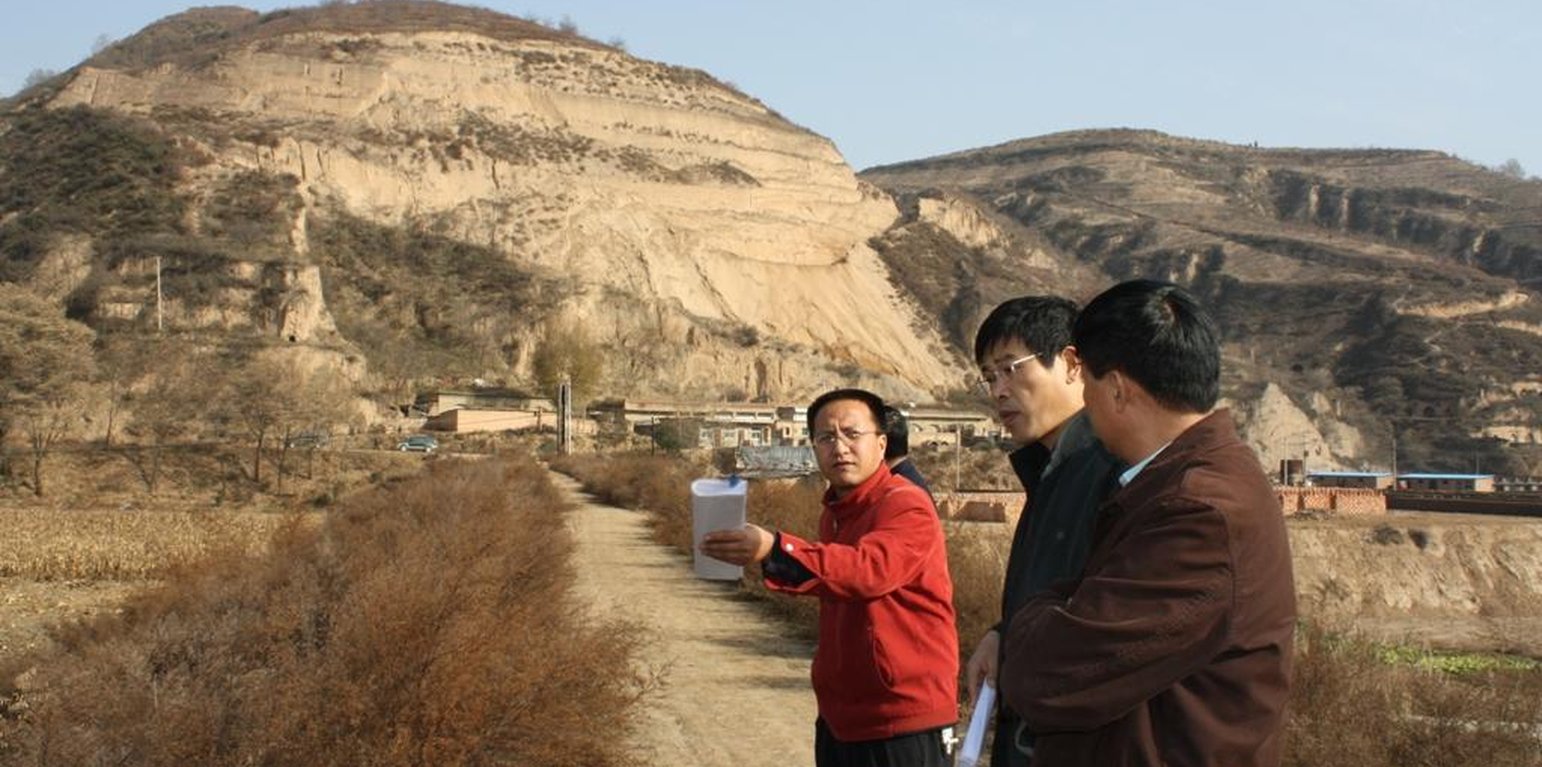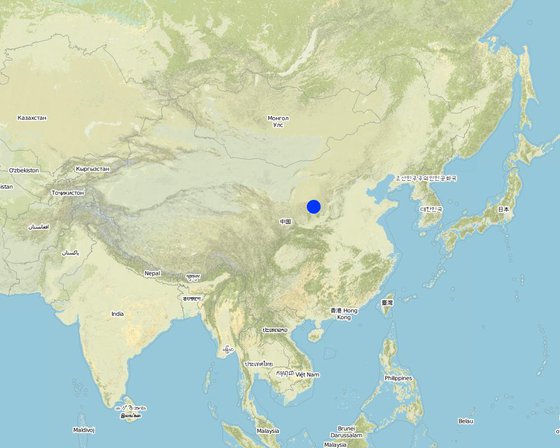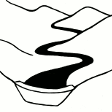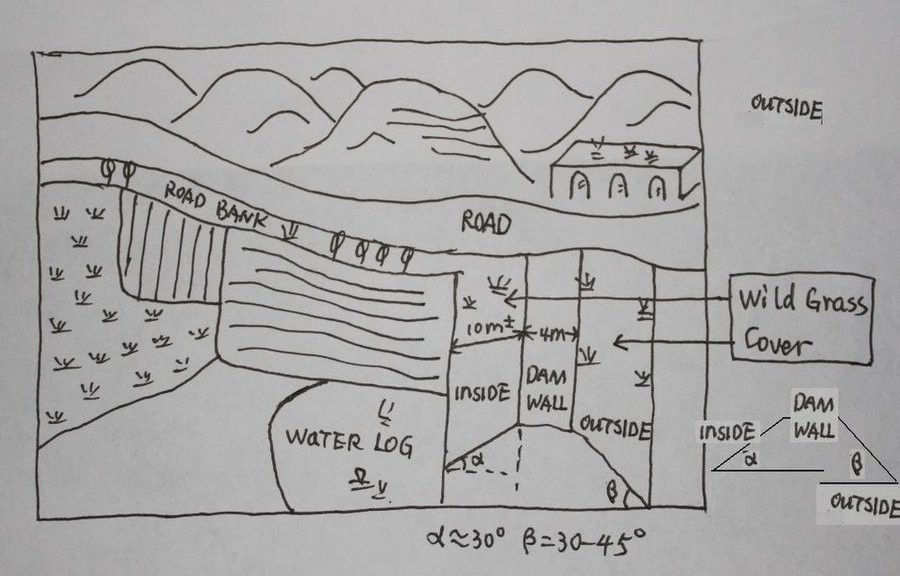



The check dam is a small dam designed to reduce flow velocity, control soil erosion, and allow to settle on the bed of the valley. The whole system includes main body of dam, spillway, overflow and supporting measures. The check dam for land is a small dam mainly for land after it is filled up by the sediment from upstream area, from several years to 20 years in common, it could be flat land in the valley, not mainly for water collection (different from reservior).
Purpose of the Technology: Check dams in the Loess Plateau are very common. There are many advantages. The check dam could not only reduce the erosion of the gullies, furthermore it retain the sediment in the flow and this decreases the sediment of the Yellow River. The check dam is good quality land for the soils because of the sedimentation of organic matter and other nutrients from topsoil . In this region soils are deep and very fertile because most soil is from the top soil upstream. The soil moisture of check dam is also much better than in any other places in the watershed because the flood should go away from its surface and the water inflitration is great in raining seasons.
Establishment / maintenance activities and inputs: The establishment needs enough money because it has to be safe enough, and the maintenance cost is not so high. The catchment with great soil erosion is better when we considered the formation time of land.
Natural / human environment: The controlling area of check dam for land varies greatly from 30 square km or more. Since the "Grain for Green" Project of China in 1999, the soil erosion on the slope decreased. The time from reservoir to land need more time because there is less and less sediment from upstream and the sedimentation changed slowly.

สถานที่: Yanhe River Basin, Shaanxi Province, จีน
ตำนวนการวิเคราะห์เทคโนโลยี: พื้นที่เดี่ยว
การเผยแพร่ของเทคโนโลยี: ใช้ ณ จุดที่เฉพาะเจาะจงหรือเน้นไปยังบริเวณพื้นที่ขนาดเล็ก
In a permanently protected area?:
วันที่ในการดำเนินการ: 10-50 ปี
ประเภทของการแนะนำ





| ปัจจัยนำเข้า | หน่วย | ปริมาณ | ค่าใช้จ่ายต่อหน่วย (USD) | ค่าใช้จ่ายทั้งหมดต่อปัจจัยนำเข้า (USD) | %ของค่าใช้จ่ายที่ก่อให้เกิดขึ้นโดยผู้ใช้ที่ดิน |
| แรงงาน | |||||
| Building the wall/ field survey and planning | Person/day | 180.0 | 8.8 | 1584.0 | 90.0 |
| Building the wall/ field survey | Machine/hrs | 75.0 | 43.8 | 3285.0 | |
| วัสดุสำหรับก่อสร้าง | |||||
| Stone | m^3 | 40.0 | 26.35 | 1054.0 | |
| ค่าใช้จ่ายทั้งหมดของการจัดตั้งเทคโนโลยี | 5'923.0 | ||||
| Total costs for establishment of the Technology in USD | -2'729.49 | ||||
| ปัจจัยนำเข้า | หน่วย | ปริมาณ | ค่าใช้จ่ายต่อหน่วย (USD) | ค่าใช้จ่ายทั้งหมดต่อปัจจัยนำเข้า (USD) | %ของค่าใช้จ่ายที่ก่อให้เกิดขึ้นโดยผู้ใช้ที่ดิน |
| แรงงาน | |||||
| check annualy the dam wall | Person/day | 15.0 | 8.8 | 132.0 | |
| ค่าใช้จ่ายทั้งหมดของการบำรุงรักษาสภาพเทคโนโลยี | 132.0 | ||||
| Total costs for maintenance of the Technology in USD | -60.83 | ||||
จำนวนก่อน SLM: 600
หลังจาก SLM: 6000
จำนวนก่อน SLM: 4500kg/ha
หลังจาก SLM: 2500kg/ha
In extreme year with great rainfall, low yield of check dam land
จำนวนก่อน SLM: 950
หลังจาก SLM: 59
จำนวนก่อน SLM: 200 kg
หลังจาก SLM: 350 kg
จำนวนก่อน SLM: 8 m
หลังจาก SLM: 4-6m
จำนวนก่อน SLM: 12-16%
หลังจาก SLM: 16-22%
จำนวนก่อน SLM: 60t/ha/yr
หลังจาก SLM: 5t/ha/yr
Sediment from slope decelerate the process of building arable land. In other words the economic function can not appear soon.
จำนวนก่อน SLM: 2events/yr
หลังจาก SLM: nearly no